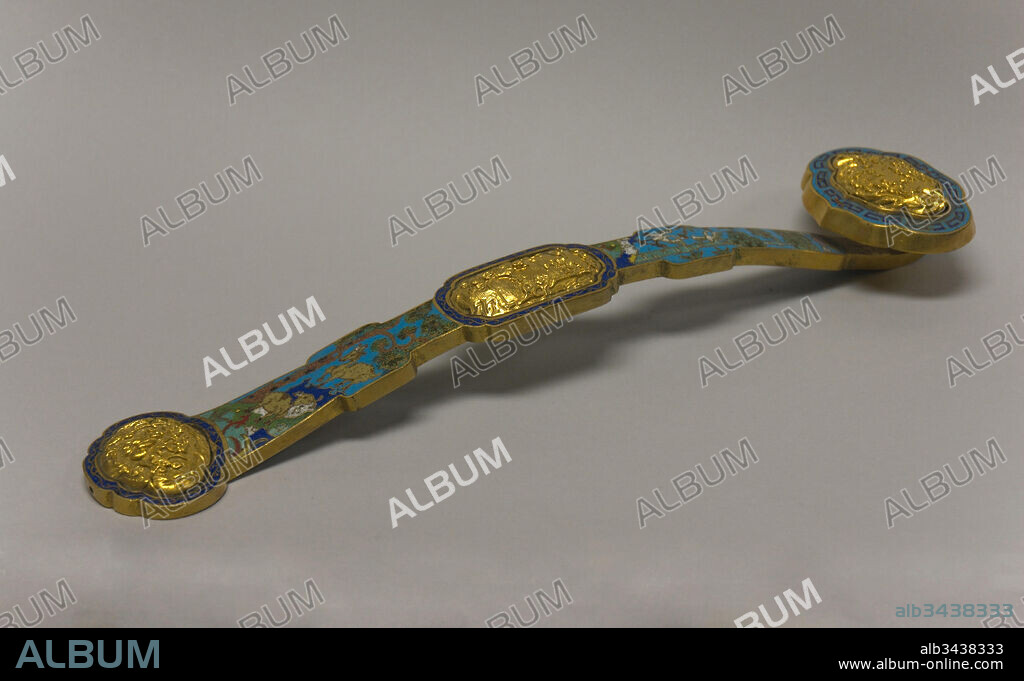alb3438333
Ruyi Scepter, Qing dynasty (1644–1911), 18th–19th century, China, Cloisonné enamel with gilt-bronze medallions, L. 17 1/2 in. (44.5 cm), Cloisonné, One translation of the Chinese term ruyi is 'as you wish,' and scepters in this shape were often given as gifts because of the good wishes they implied. Although they may have had certain ritual functions, scepters frequently appeared in displays, either placed on stands or in vases and brush pots alongside other functional and/or exotic goods.

|
Add to another lightbox |
|
Add to another lightbox |



Buy this image.
Select the use:

Caption:
Ruyi Scepter, Qing dynasty (1644–1911), 18th–19th century, China, Cloisonné enamel with gilt-bronze medallions, L. 17 1/2 in. (44.5 cm), Cloisonné, One translation of the Chinese term ruyi is 'as you wish,' and scepters in this shape were often given as gifts because of the good wishes they implied. Although they may have had certain ritual functions, scepters frequently appeared in displays, either placed on stands or in vases and brush pots alongside other functional and/or exotic goods
Credit:
Album / quintlox
Releases:
Model: No - Property: No
Rights questions?
Rights questions?
Image size:
5535 x 3393 px | 53.7 MB
Print size:
46.9 x 28.7 cm | 18.4 x 11.3 in (300 dpi)
Keywords:
1644–1911 • 17 1/2 • 18TH–19TH CENTURY • 44.5 CM • ALONGSIDE • APPEARED • BRUSH POTS • CERTAIN RITUAL • CHINA • CHINE • CHINESE TERM • CHINESE • CLOISONNE ENAMEL • CLOISONNE • DISPLAYS • EXOTIC • FORMS (GEOMETRIC) • FUNCTIONAL • FUNCTIONS • GIFTS • GILT-BRONZE MEDALLIONS • GIVEN • GOOD WISHES • GOODS • IMPLIED • L • PLACED • PORCELAIN • QING DYNASTY • RUYI SCEPTER • RUYI • SCEPTERS FREQUENTLY • SCEPTERS • SHAPE • SHAPES • STANDS • TRANSLATION • VASES • YOU WISH
 Pinterest
Pinterest Twitter
Twitter Facebook
Facebook Copy link
Copy link Email
Email
